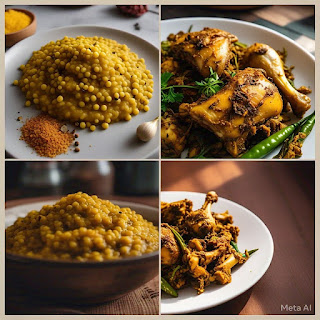Moong dal (also known as green gram) and chicken are both good sources of protein, but they have different protein contents and profiles. Here's a comparison:
Protein Content Comparison
- Moong dal (cooked): 14-16 grams of protein per 100 grams
- Chicken breast (cooked): 31-33 grams of protein per 100 grams
- Chicken thigh (cooked): 20-22 grams of protein per 100 grams
Protein Quality Comparison
- Moong dal: Moong dal is a plant-based protein source and is relatively low in certain essential amino acids like methionine and tryptophan. However, it is high in other amino acids like lysine and leucine.
- Chicken: Chicken is an animal-based protein source and is considered a complete protein, meaning it contains all nine essential amino acids that the human body cannot produce on its own.
Nutritional Considerations
- Moong dal: Moong dal is lower in fat and calories compared to chicken and is also rich in fiber, vitamins, and minerals like iron and potassium.
- Chicken: Chicken is relatively low in fiber and certain vitamins and minerals compared to moong dal, but it is a good source of niacin, vitamin B6, and selenium.
In summary, while chicken has a higher protein content compared to moong dal, moong dal is still a good source of protein and offers other nutritional benefits like fiber, vitamins, and minerals. If you're looking for a plant-based protein source, moong dal can be a great option. However, if you're looking for a complete protein source, chicken may be a better choice.
Purchase Lakeena Dal via Online - www.seenaavaanaa.com

Comments
Post a Comment